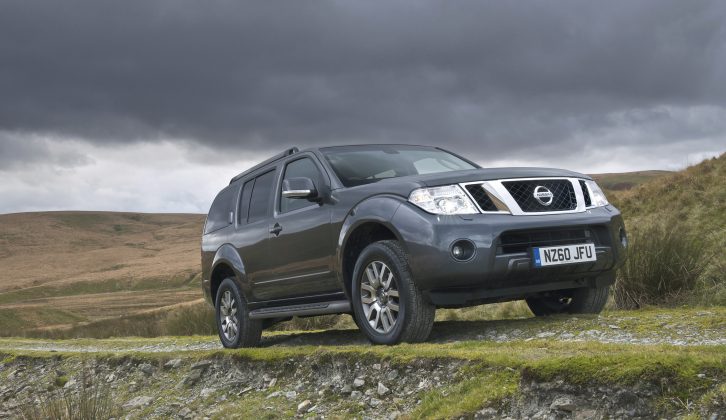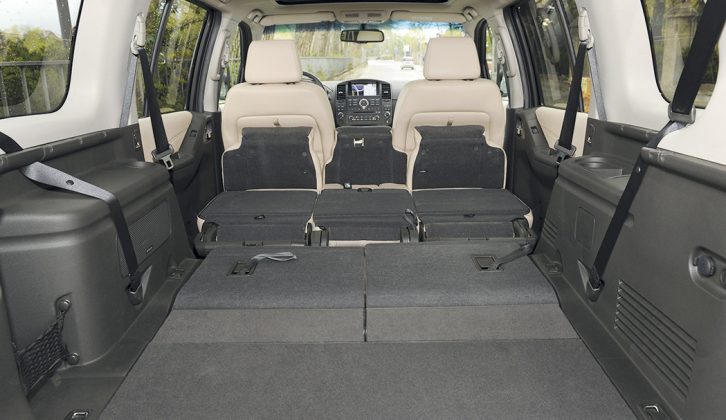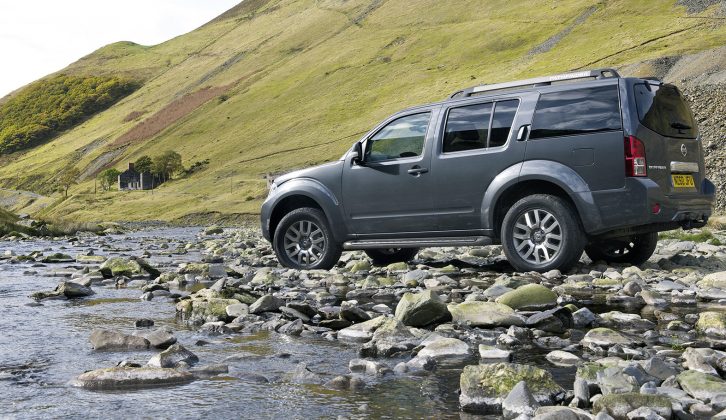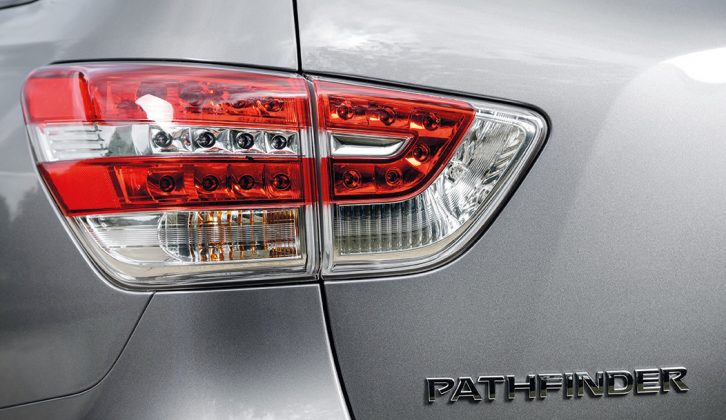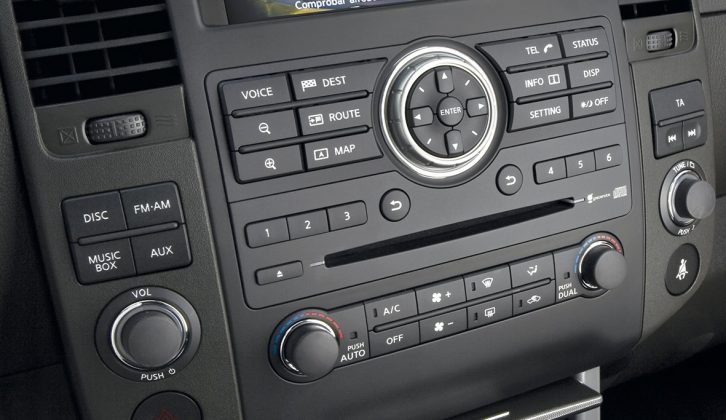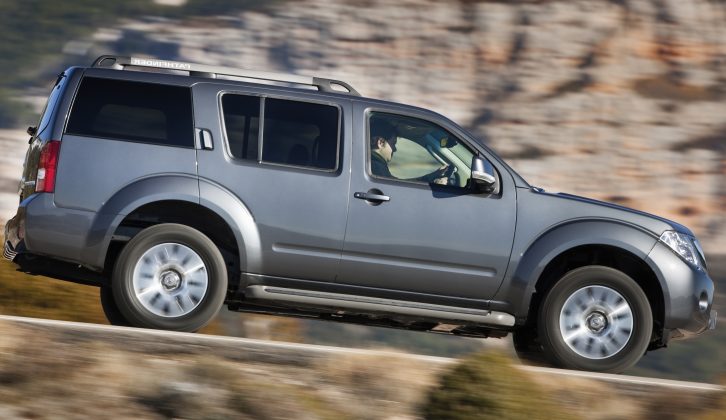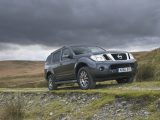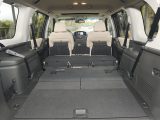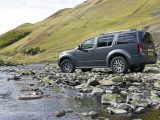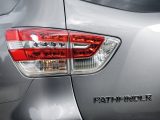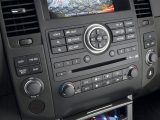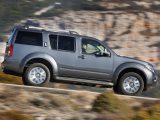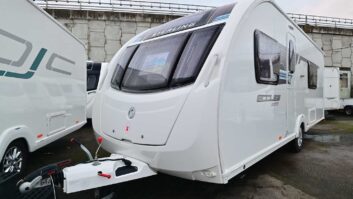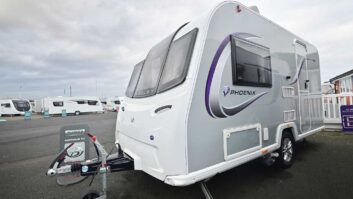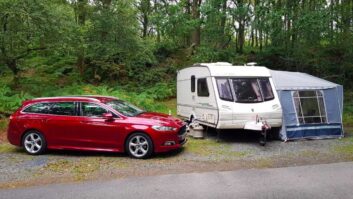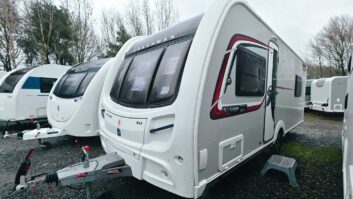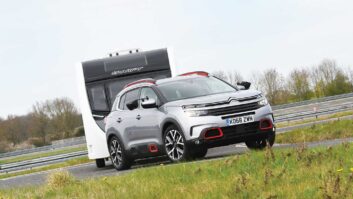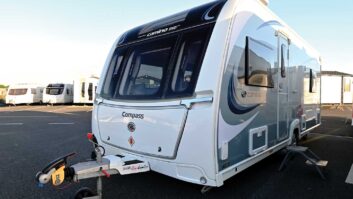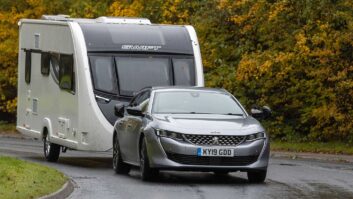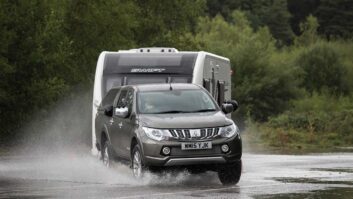Our previous encounter with Nissan’s Pathfinder was five years ago, about the same time the manufacturer facelifted and improved what we already had earmarked as a top tow car. In fact, we concluded: ‘The Pathfinder achieves exactly what it set out to do, which was offer a cheaper, more reliable alternative to the Land Rover Discovery.’ So now seems like a good time for a retrospective look at Nissan’s 2010 changes and to see whether this fairly old model still makes sense – and to assess what tow car talent it has.
The Pathfinder’s basics haven’t changed: this is a rugged four-wheel-drive seven-seater, still based – unusually – on a separate ladder-frame chassis. That’s real old-school stuff, and the chassis adds a bit of weight compared to modern unitary construction. But the truth is, despite looking pretty chunky at first glance, the Pathfinder is actually a bit smaller than its Land Rover Discovery rival, which is handy. Don’t be fooled by those bulging wheelarches.
Model history
Nissan’s 2010 facelift didn’t make a radical change to the Pathfinder’s appearance – you’d be hard-pressed to tell without seeing new and old side by side – but did involve a complete new bonnet, grille and headlamps.
It got a restyle inside, too, with better trim materials, clearer instruments, a new centre console, a concealed storage tray and, at last, an MP3 aux input.
With it being a relatively low-selling niche model, Nissan sensibly restricted choice to two trim levels and just the one engine, a 2.5-litre diesel four-cylinder. This was a development of the existing engine, and in all the right ways. Power was up from 168bhp to 187bhp, torque from 297lb ft to 332lb ft. Despite that, the engine’s great efficiency improvements not only got fuel consumption up from 28mpg to 32mpg, but decreased emissions enough to drop the Pathfinder by a tax band, lowering annual road tax from £490 to £290.
Those two trim levels in ascending order are Acenta and Tekna. But even Acenta is pretty comprehensive, with standard kit such as an Electronic Stability Programme, automatic headlamps and wipers, privacy glass, Bluetooth connectivity, 17in alloys, roof rails and six airbags. Tekna adds leather upholstery, electric and heated front seats, a Bose sound system, rear parking camera, side steps, a sunroof and xenon headlamps. Buying a Tekna is also the only way to get the optional five-speed automatic gearbox, and plenty did – sales were about a 50/50 split between those and the six-speed manual ’box.
Trouble spots
If you are looking at Nissan Pathfinders for sale and are keen on an automatic, take a decent-length test drive and establish that gearshifts are consistently so smooth that you don’t really notice them. There have been a few issues with Transmission Control Modules, which cost around £1500 to replace, so anything other than perfection in this department suggests you look elsewhere.
Also on the test drive, listen for suspension knocks and be aware of any wandering. There’s a lot of load on the suspension ball joints, which wear out regularly. It’s not a reason to reject a car, but a handy bargaining point at around £60 each.
It will probably be daytime when you look at cars, so don’t forget to put the lights on and see if the LED switch backlights illuminate. If not, much of the dashboard will need dismantling to replace the electronic module that controls them, and that can add up to a lot of labour.
Check the air-con/heating system’s aluminium pipes where they run up past the offside rear suspension mounting. They are prone to corroding around their binders here, and being one-piece pipes that run through the chassis it’s a body-off job to replace them. Even if they’re OK, it’s worth spraying the area at least once a year with some kind of corrosion inhibitor.
Lower than expected power output, particularly on higher-mileage examples, is likely to mean problems with the Diesel Particulate Filter. Again, not a deal-breaker, but do get money off – several hundred – to cover the cost of fixing it.
Verdict
Unless you have the unlikely need to regularly carry seven adult-sized people, in which case those in the third row will find limited foot space, there’s little to grumble about with a Pathfinder. Towing capacity is vast, and they seem to be well in tune with Nissan’s reputation for reliability. The only stumbling block is that you still need a five-figure sum to buy one – but there are the earlier versions for those on a tighter budget.
For a Pathfinder Acenta you should be paying £2000-£2500. It costs less for one of these than for an equivalent Tekna – which is about the same difference as when they were new.
The Pathfinder Tekna auto is the least desirable of the three options, and by a small measure the most likely to fall victim to expensive problems as it ages.
What you need to know
As we mentioned, the Nissan Pathfinders made from 2010 to 2014 are still pretty pricey, ranging from £11,000-£27,000.
Anything at the bottom end of our price range is likely to be wearing plenty of miles, but if you can pay another £1000 then you should pick up a decent 2010 Acenta with near-average mileage and proper history.
For the Tekna’s goodies, expect to pay £14,000 for a 2010 model worth having, and add perhaps another £3000 for each extra year of newness – and the same goes for the Acenta. There’s now no premium for automatics, because there are more auto than manual Teknas available, and the market is a bit wary of them.
Here are some useful figures (for a 2012 Pathfinder Tekna 2.5 dCi):
- Kerbweight 2110kg
- Towing limit 3000kg
- Towball limit 120kg
- 85% match 1794kg
You will need to fit a towbar before heading off in your Nissan Pathfinder on your caravan holidays. According to quotes we received from PF Jones, a Witter flange towbar will be £88.92, a Westfalia detachable towbar £186.60 – fitting costs extra. We’ve also received approximate servicing quotes from Servicing Stop: an interim service comes in at £134 and a full service is £227.
Towing capacity is vast, and they seem to be well in tune with Nissan’s reputation for reliability
